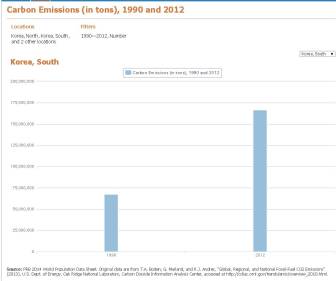Students Should Feel Secure Coloring Outside the Lines
“Schools are places of learning and also miniature societies. The climate of a school has a direct impact on both how well students learn and how well they interact with their peers.” (“Best Practices”, 2013) With the changes to legal policies and shifts in social norms that have occurred in the last decade, more and more high school students are revealing that they identify as lesbian, gay, bisexual, transgender/transitioning, and/or queer/questioning (LGBTQ). This is a long way from students only using a gender binary system (male or female) for identification. It is important for high schools to be able to provide adequate support for all of their students regardless of gender expression and identity. 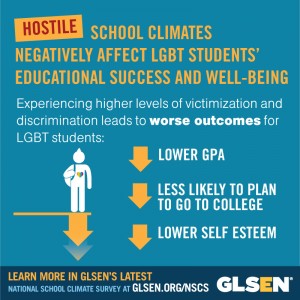
“Studies have shown that creating a supportive environment for LGBT[Q] students improves educational outcomes for all students, not just those who may identify as LGBT[Q].”(“Best Practices”, 2013) Adolescent is a tumultuous time for youth. This time occurs around middle school and high school when youth are struggling with identity and role confusion. This is a very tender age when going to school in a hostile environment can easily promote depression, anxiety, emotional distress, and even suicide.
High school youth spend a considerable amount of time at school between academics and extra-curricular activities. Studies have shown that schools are the main venue for victimizing youth who are or thought to be LGBTQ. It is critical that LGBTQ youth are provided with ample support systems, not only in the community, but most importantly at school.

In a study conducted by Munoz-Plaze, it was found that “despite increasing visibility, persons who are lesbian, gay, bisexual, or transgender (LGBT) continue to face extreme social, legal, and institutional discrimination within the United States. ” The lack of support and continued discrimination was felt close to home. Less than a month ago, a local high school student (Murtomaki) committed suicide. Murtomaki identified as asexual (neither feeling like they were fully male or female). Murtomaki faced extreme bullying from peers and wasn’t able to find the support that was necessary to prevent the eventual outcome.. In Murtomaki’s suicide note that was posted on Facebook, she stated how she struggled with bullying because she wasn’t considered ‘trans enough.”* She also indicated her frustration with not being able to receive health care appropriate to her identity. After Murtomaki’s death, students at the high school wanted to make sure that her death was not in vain. They have started to educate their peers on gender identity and are working with the school administration to set up an equality club for student who identify as other than gender binary.
I asked the superintendent of a local high school what supports or accommodations are provided to LGBTQ students in order for them to feel safe and accepted. She replied “We provide support to all our students. We have counselors in all our buildings and encourage good communication with students, staff and parents. This protocol serves our students well and we strive to ensure that all students feel safe and welcome in our school.”

What should high schools do to support their LGBTQ students?
Suggestions from the 2013 National School Climate Survey reported that they have seen an increase in the support and positive outcomes available to LGBTQ students; however, they recommend the following:
- Support student clubs, such as Gay-Straight Alliances (GSAs), that provide support for LGBT students and address LGBT issues in education;
The allowance of GSA groups at schools have been slowly increasing throughout the last decade. Speaking to students at two different local high schools, one school started an equality club after the death of a classmate and the other school started their club just recently. It’s too often (as in the case of the first school) that these changes don’t occur until something negative happens to open people’s eyes to the trouble.
- Provide training for school staff to improve rates of intervention and increase the number of supportive teachers and other staff available to students;
Training of school staff is also an area that has seen an increase. There is a wonderful kit that has been developed to assist schools with training their staff on how to create a safe space for LGBT students. One of the most effective ways for an educator to create a safe space is to be a supportive ally to LGBT students. Students just knowing that they have an ally in the school and/or a safe place to go if they need one is often all that LGBTQ students need in order to feel safe and secure at school.
- Increase student access to appropriate and accurate information regarding LGBT people history, and events through inclusive curricula and library and Internet resources;
The 2013 School Climate Survey reported that students have seen an increased shift in this area; however, not in every form of accessible media. In the five years students have been able to access LGBTQ websites and internet data at school. LGBTQ materials in textbooks and curriculum has also risen. The amount of resources that can be found in the library; however, has actually declined since 2009. This might not be as troubling as it seems with the greater accessibility of the internet.
- Ensure that school policies and practices, such as those related to dress codes and school dances, do not discriminate against LGBT students; and
This is something that has been in the media a lot, especially in the spring when prom season comes around. There are a lot of schools who have made great strides in allowing LGBTQ students to feel comfortable attending a prom or other school social event. The American Civil Liberties Union has published a fact sheet for high school students informing them of their “prom night rights.” It addresses issues as same-sex dates, attire, and prom royalty. One thing that the publication points out is the school officials either don’t know what the law tells them to do or just figure that they won’t be questioned. One of the final recommendations is to behave respectfully so that the school won’t find an excuse for their behavior.
- Adopt and implement comprehensive school and district anti-bullying/harassment policies that specifically enumerate sexual orientation, gender identity, and gender expression as protected categories alongside others such as race, religion, and disability, with clear and effective systems for reporting and addressing incidents that students experience.
This is an area that a lot of schools are starting to excel at, especially in my current area. They have anti-bullying/harassment policies in effect and tend to have a zero tolerance for bullying behaviors. In speaking with a local high school student, they told me that although their school does have a great anti-bullying policy and have rallies, presentations, and lessons on these issues – they don’t address LGBTQ students specifically.
There are agencies that have been established to help LGBTQ persons obtain the rights that they deserve. One such example is the LGBT Project led by the American Civil Liberties Union (ACLU) is designed to “help protect young people’s right to express themselves, start gay-straight alliance clubs, have their gender identity respected, and be taught in a safe environment.”(ACLU, n.d.) The ACLU helps youth fight so that they don’t have to fear going to school and gives them the opportunity to have the freedom to be open (or not) about their identity and beliefs in school.
High schools appear to be moving in the right direction but they still have a long way to go to fully support and accommodate LGBTQ students. Two areas that have been identified as lacking in this research is that of training of the educators and education of students. There may be counselors and other support staff available for LGBTQ students to turn to; however, those might not be the school educator that they have a bond with. Students also have to be knowledgeable about LGBTQ students. Alternate lifestyles and preferences should be discussed in social studies, science, health, etc. Many schools teach about evolution, the Big Bang Theory and Jesus; however, the only talk about relations between a man and a women. By providing a wider range of LGBTQ allies and better educated students, schools will blossom into a place where all students regardless of their non-traditional status feel safe.
* It is interesting to note that not being consider “____ -enough is a determining factor on how accepting peers are. There are two female-to-male students at another local high school. One student’s appearance is very male while the other student is commonly referred to as a “girl just trying to look like a boy.”
References
“Best Practices: Creating an LGBT-inclusive School Climate.” Tolerance Teaching 2013: Print.
Gay, Lesbian and Straight Education Network. The Safe Space Kit: Guide to Being an Ally to Lgbt Students. Gay, Lesbian and Straight Education Network, 2009. Print.
Goodenow, C., Szalacha, L. and Westheimer, K. (2006), School support groups, other school factors, and the safety of sexual minority adolescents. Psychol. Schs., 43: 573–589. doi: 10.1002/pits.20173
Click to access Prom_Rights.pdf
McLoad, Saul. “Erik Erickson.” Simply Psychology 2008, 2013: Web
Kosciw, J. G., Greytak, E. A., Palmer, N. A., & Boesen, M. J. (2014). The 2013 National School Climate Survey: The experiences of lesbian, gay, bisexual and transgender youth in our nation’s schools. New York: GLSEN.
Munoz-Plaza, Corrine, Sandra C. (Sandra Crouse) Quinn, and Kathleen A. Rounds. “Lesbian, Gay, Bisexual and Transgender Students: Perceived Social Support in the High School Environment.” The High School Journal: 52-63. Print.
Roblee, Dan. “Trans Teen Remembered as Friend, Leader.” Daily Mining Gazette 23 Nov. 2015. Print.



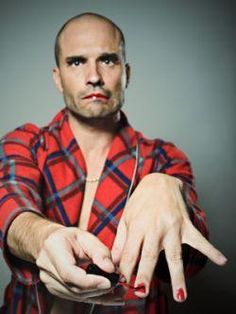


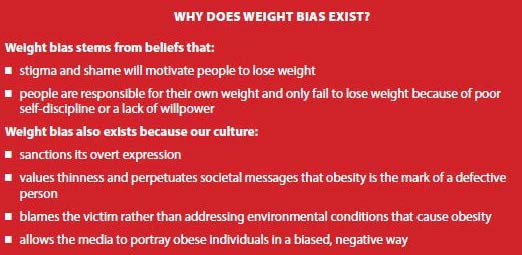

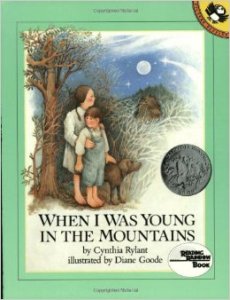



 s. Human activities have caused the environmental concentration of carbon dioxide to rise to alarming levels. Human activities consist of burning oil, coal and gas, as well as deforestation (which limits the amount of natural carbon dioxide removal).
s. Human activities have caused the environmental concentration of carbon dioxide to rise to alarming levels. Human activities consist of burning oil, coal and gas, as well as deforestation (which limits the amount of natural carbon dioxide removal).
 the 1990’s, North Korea suffered a massive economic crisis which ultimately led to a famine. North Korea has not been able to recover from these events. The dictatorship reign of their past leaders and subsequent tyrannical reign of their current leadership has caused their once flourishing economy to collapse. A majority of the industry that once operated all over North Korea now only operates in a small area to include the main hub in Pyongyang. The crash of the economy prevents the population from being able to operate cars. They are also unable to afford the luxuries of heating their homes or using electricity. These activities, which once created a lot of carbon emissions, no longer are available. Thus the reason for the massive decline between 1990 and 2012.
the 1990’s, North Korea suffered a massive economic crisis which ultimately led to a famine. North Korea has not been able to recover from these events. The dictatorship reign of their past leaders and subsequent tyrannical reign of their current leadership has caused their once flourishing economy to collapse. A majority of the industry that once operated all over North Korea now only operates in a small area to include the main hub in Pyongyang. The crash of the economy prevents the population from being able to operate cars. They are also unable to afford the luxuries of heating their homes or using electricity. These activities, which once created a lot of carbon emissions, no longer are available. Thus the reason for the massive decline between 1990 and 2012.